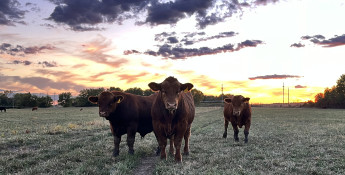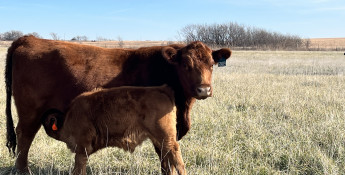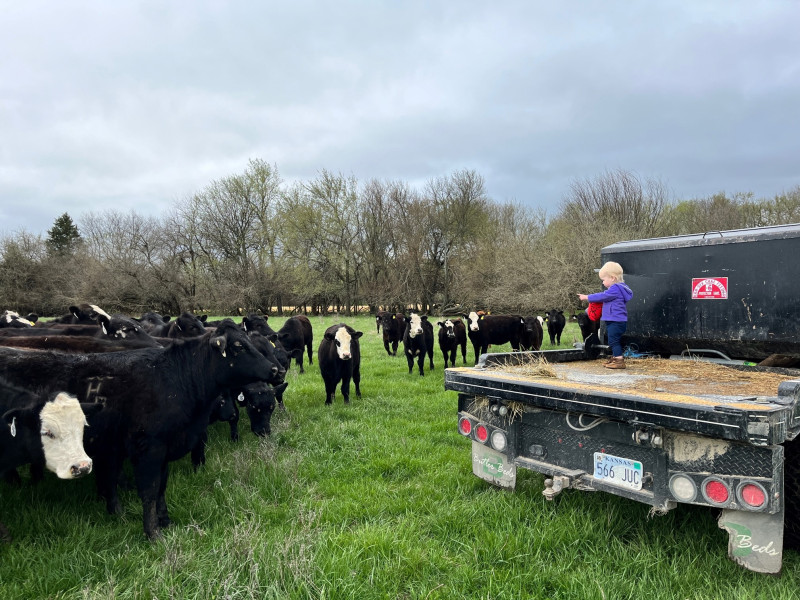By Brandi Buzzard on April 19, 2023
How Ranchers Observe Earth Day
Earth Day is every day for farmers and ranchers
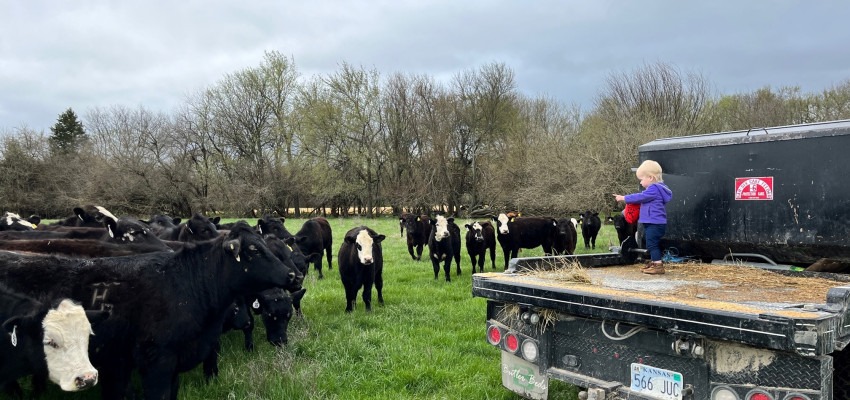
One of the many reasons I appreciate Earth Day is its presence in the spring. Presently, in our corner of Kansas, the ponds are full and lush green grass covers the hills due to much-appreciated moisture. The water is as clear as the skies, and my cup runneth over with gratitude for this lifestyle.
In the spring, we are already planning for summer, fall and winter work on the ranch – yes, winter. Those plans include testing the soil in our pastures and tillage acreage to identify nutrient deficiencies, fertilizing pastures and cover crop fields and forming a strategy for grazing our cows and our cattle that will only spend the grazing season with us (stocker cattle) on a rotational basis. We are also mindful of the amount of pasture we will have available for hay to feed cows through the winter. This strategic planning happens around Earth Day but also occurs continually throughout the year, so we can keep our finger on the pulse of the natural resources around us. By keeping an eye on water, soil and grass, we are better able to manage land and livestock to cohabitate in harmony.
Many of our weekends are spent as a family doing some kind of ranch work. In the spring, we’re rewarded for the long winter with bumpy rides across the pasture with the windows down while our daughters squeal with delight. We’re watching our cows’ body condition to make sure they are healthy as they carry their pregnancies into the second trimester and we’re watching our pastures for signs of weeds. Pasture health, in our minds, is closely correlated to cattle health and we want our pastures weed-free so the cattle have unimpeded access to nutritious grass. As with most weekends, this is exactly how we will spend Earth Day: as a family caring for the land and our cattle. It seems so simple but it’s just second nature at this point, like brushing our teeth.
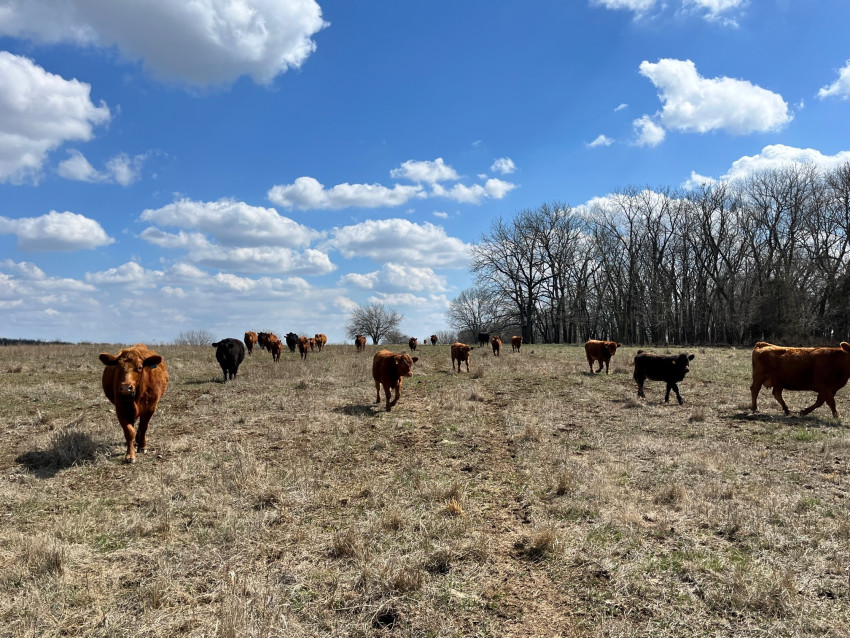 Even at the ranch house, there are ways we work to conserve and preserve. Meal planning and “planned-overs” help us reduce our food waste. Food loss and waste is the single most common material landfilled and incinerated in the United States and when we waste food, all the resources used to grow it – water, seed, fertilizer, fuel, etc. – are also wasted. By reducing our food waste, we can help improve our carbon footprint from both the farm and the fork perspectives. As ranchers, we obviously care about the resources used to raise cattle and subsequently produce beef, however, we are cognizant of how much food is thrown in the garbage, and awareness about this crucial issue is a high priority for us.
Even at the ranch house, there are ways we work to conserve and preserve. Meal planning and “planned-overs” help us reduce our food waste. Food loss and waste is the single most common material landfilled and incinerated in the United States and when we waste food, all the resources used to grow it – water, seed, fertilizer, fuel, etc. – are also wasted. By reducing our food waste, we can help improve our carbon footprint from both the farm and the fork perspectives. As ranchers, we obviously care about the resources used to raise cattle and subsequently produce beef, however, we are cognizant of how much food is thrown in the garbage, and awareness about this crucial issue is a high priority for us.
We try to live as if Earth Day is every day because if we only cared about the land and natural resources once per year, we’d be the antithesis of sustainability and conservation. While it’s easy to get caught up in the day-to-day, we must always keep the future on our mind to ensure the preservation of our land, livestock and family business for future generations.

